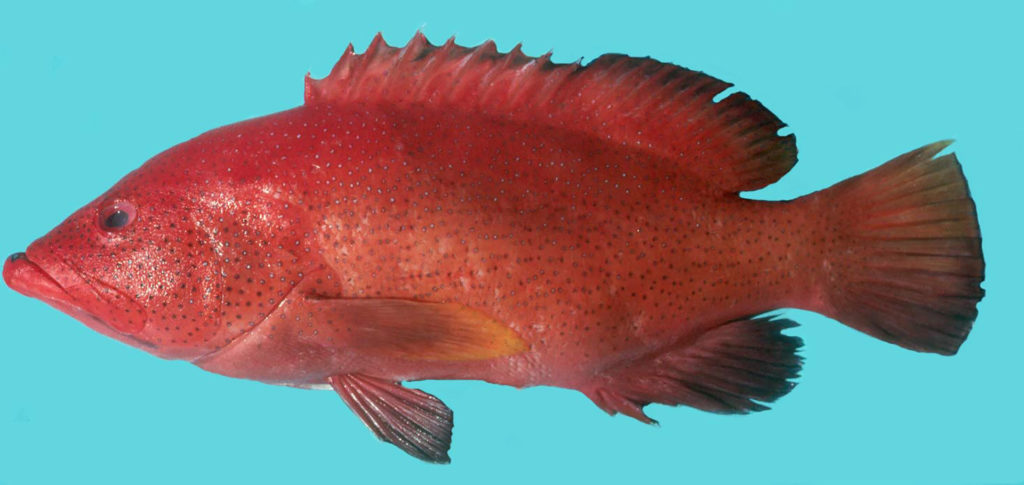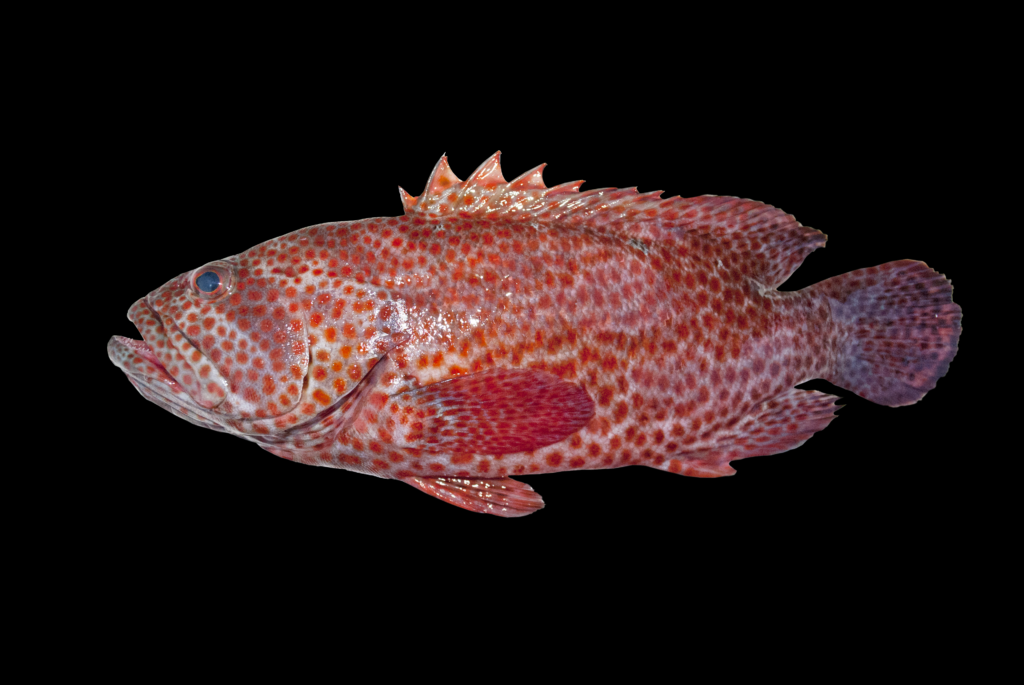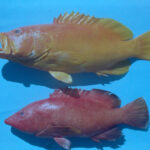
| Family | Scientific Name | Author | Year | Common Name |
| Serranidae | Cephalopholis fulva | (Linnaeus) | 1758 | Coney |
All Cephalopholis — Dorsal fin with 9 spines and 13-20 rays. Anal fin with 3 spines and 8 or 9 rays. Most of upper edge of operculum free, not connected by skin to body. Caudal fin rounded or convex. Head larger, its length contained 2.3-3.3 times in standard length. Preopercle without a large antrorse spine in most species; middle opercle spine not reaching edge of operculum. Front nostrils variously shaped, but always closer to rear nostrils than to upper lip. A thin, moveable supramaxilla bone along upper, rear edge of maxilla (supramaxilla is covered by skin and not obvious, but it can be discerned by pushing the upper edge of the maxilla with a fingernail or dissecting needle; the supramaxilla is more apparent if the skin is cut and peeled off the free, rear part of the maxilla). Most teeth depressible (hinged). Scaly flap of skin joining upper part of inner (posterior) side of pectoral-fin base to body. Soft dorsal and anal fins mostly covered with thick skin and scales. Scales on body small, lateral scale series (69-146) more numerous than lateral-line scales. No large antrorse spine on corner of preopercle (but there may a few enlarged, ventrally-directed serrae there). Snout longer than eye diameter.
Cephalopholis fulva
Unique Characters: Head and body covered with small dark-edged pale blue spots. 2 small black spots on top of caudal peduncle and 2 at tip of lower jaw. Anal-fin rays 9; pectoral-fin rays 17-19.
Similar Species: Graysby Cephalopholis cruentata. Head, body, and fins pale grey, brown, or olive green, covered with orange-brown or reddish spots. 4 distinct spots, which can change rapidly from black to white or back again, on body at base of dorsal fin. Anal-fin rays 8; pectoral-fin rays 16.

Gallery

